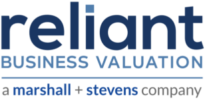13 Oct Calculating Cash Flow for a Business
In general, a small to mid-sized business is defined as a business that is privately owned and usually has up to 500 employees, depending on its industry. Calculating the cash flow of these small to mid-sized businesses can be tricky because one will need to account for a number of different factors.
When appraising a small to mid-sized business, one of the truest forms of cash flow is known as Seller’s Discretionary Earnings (SDE). This is not to be confused with EBITDA, which is more commonly used when valuing large businesses. A company’s SDE represents the total financial benefit that a single full-time owner-operator would derive from a business, including adjustments for officer’s compensation, non-recurring income and expenses, and discretionary expenses. The formula for SDE is shown below:
SDE = Adjusted EBITDA + Owner Compensation (one full-time owner)
Where EBITDA = net Earnings + Interest + Taxes + Depreciation + Amortization.
Whether you are calculating a company’s true SDE or EBITDA, you will often need to work through normalizing adjustments. We often break normalizing adjustments into two categories: non-recurring items and discretionary items.
- Non-Recurring Income and Expenses
Non-recurring income and expenses are much like their name implies: income and expenses that a company incurs only one time, are derived from a company’s core business but are unlikely to occur again in the future. Examples of non-recurring items can include income from the sale of an asset, legal expenses, interest income, or an emergency equipment repair expense. Overall, non-recurring income and expenses could be generalized as income or expenses that a hypothetical buyer would neither benefit from nor likely incur again.
- Discretionary Expenses
Discretionary expenses are expenses that don’t necessarily contribute to the operating performance of your company or are unlikely to continue under a new owner. These discretionary expenses can include expenses that are simply in excess of the normal budget, deemed non-essential for business operation and not directly related to the core operations of the business, or even expenses that a business pays but are more akin to personal expenses that benefits the current business owner. The most common discretionary expenses are owner’s salary and benefits, but can also include items such as professional memberships and charitable contributions.
By making the proper adjustments for your non-recurring and discretionary items, you’ll arrive at a truer cash flow calculation for your small to mid-sized business. This becomes increasingly important as you look toward a potential sale given that a hypothetical buyer would not incur these expenses or benefit from certain income. The cleaner your financials, the better the terms and pricing you can expect when selling your business.


